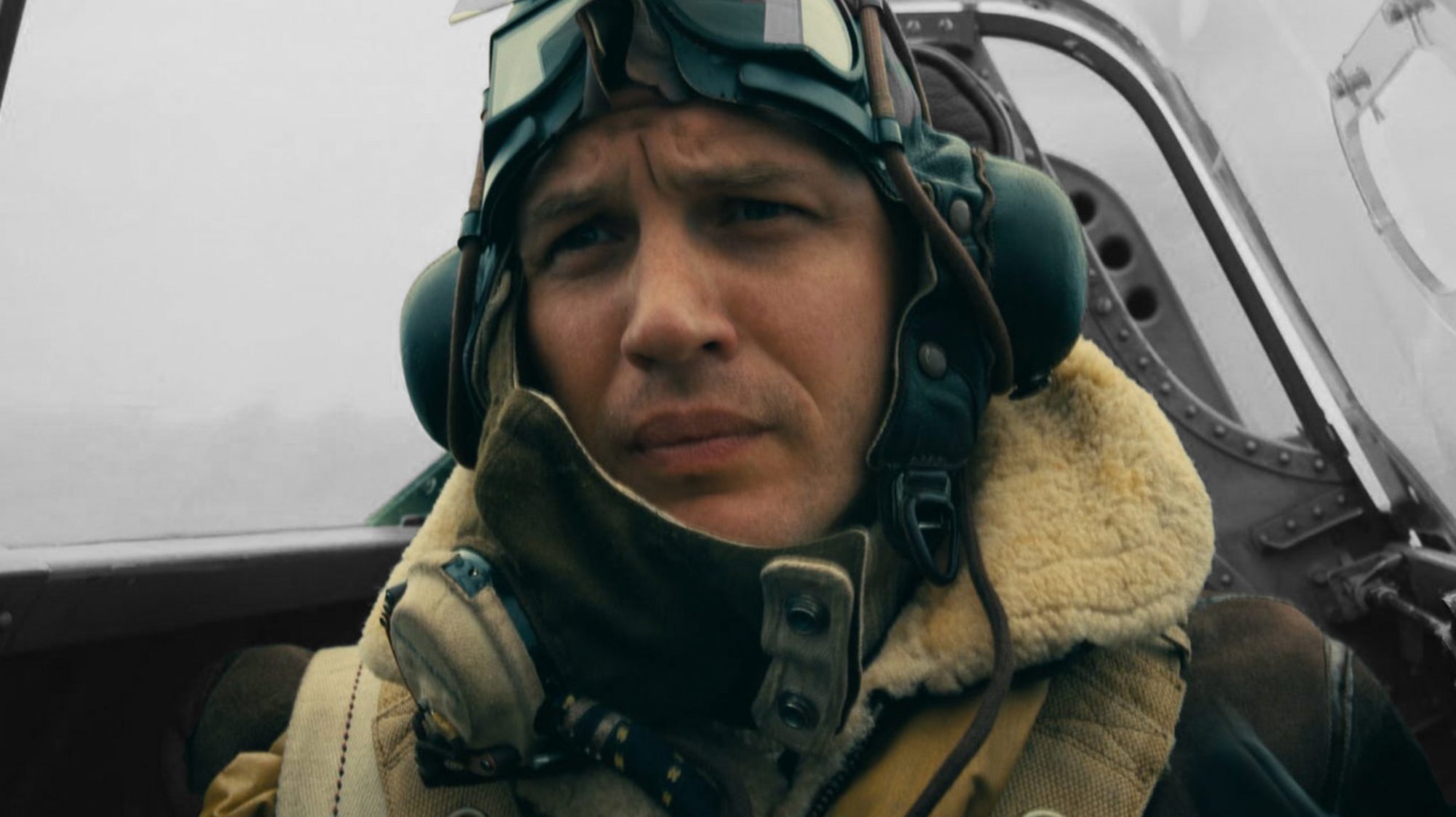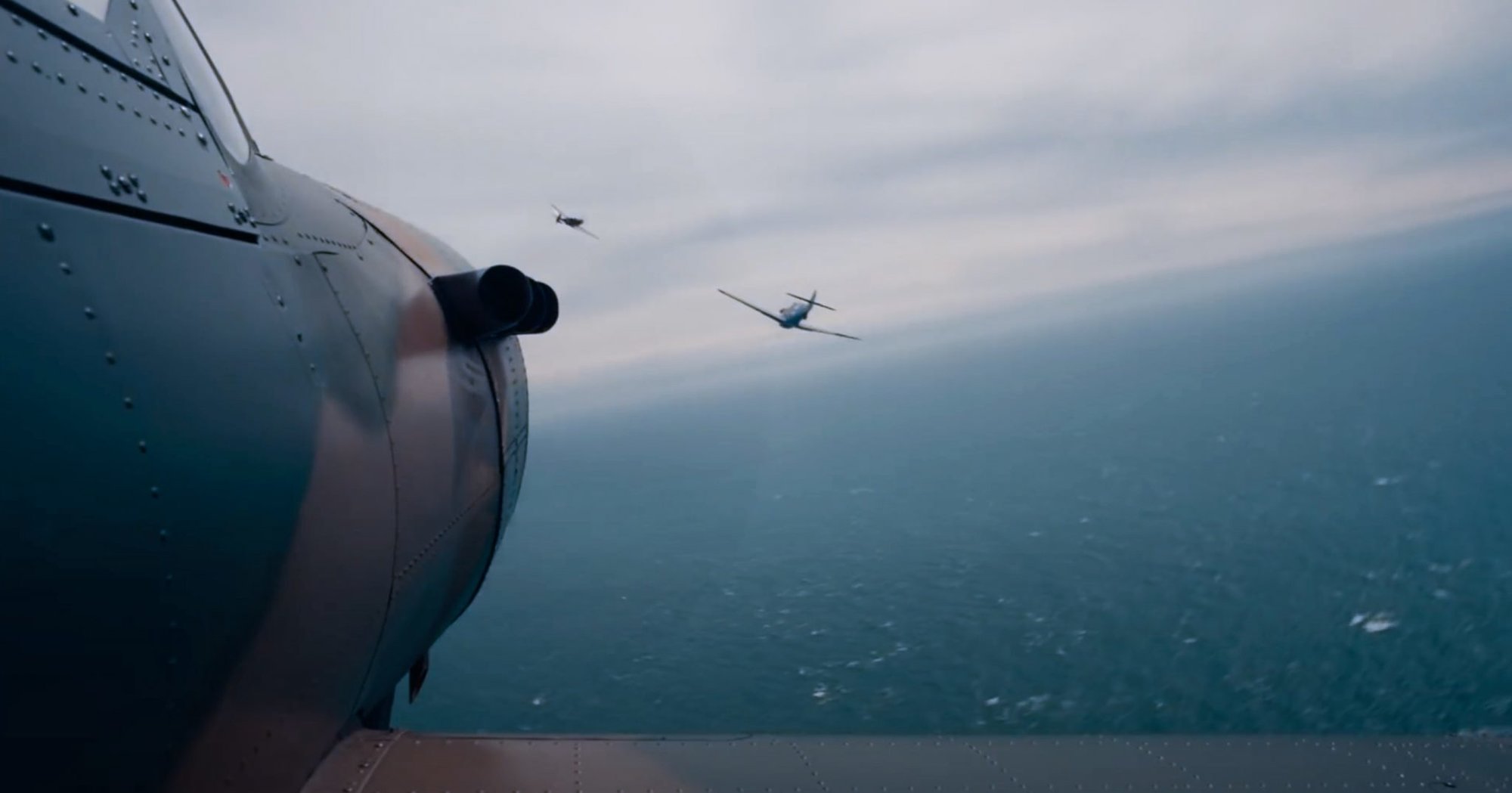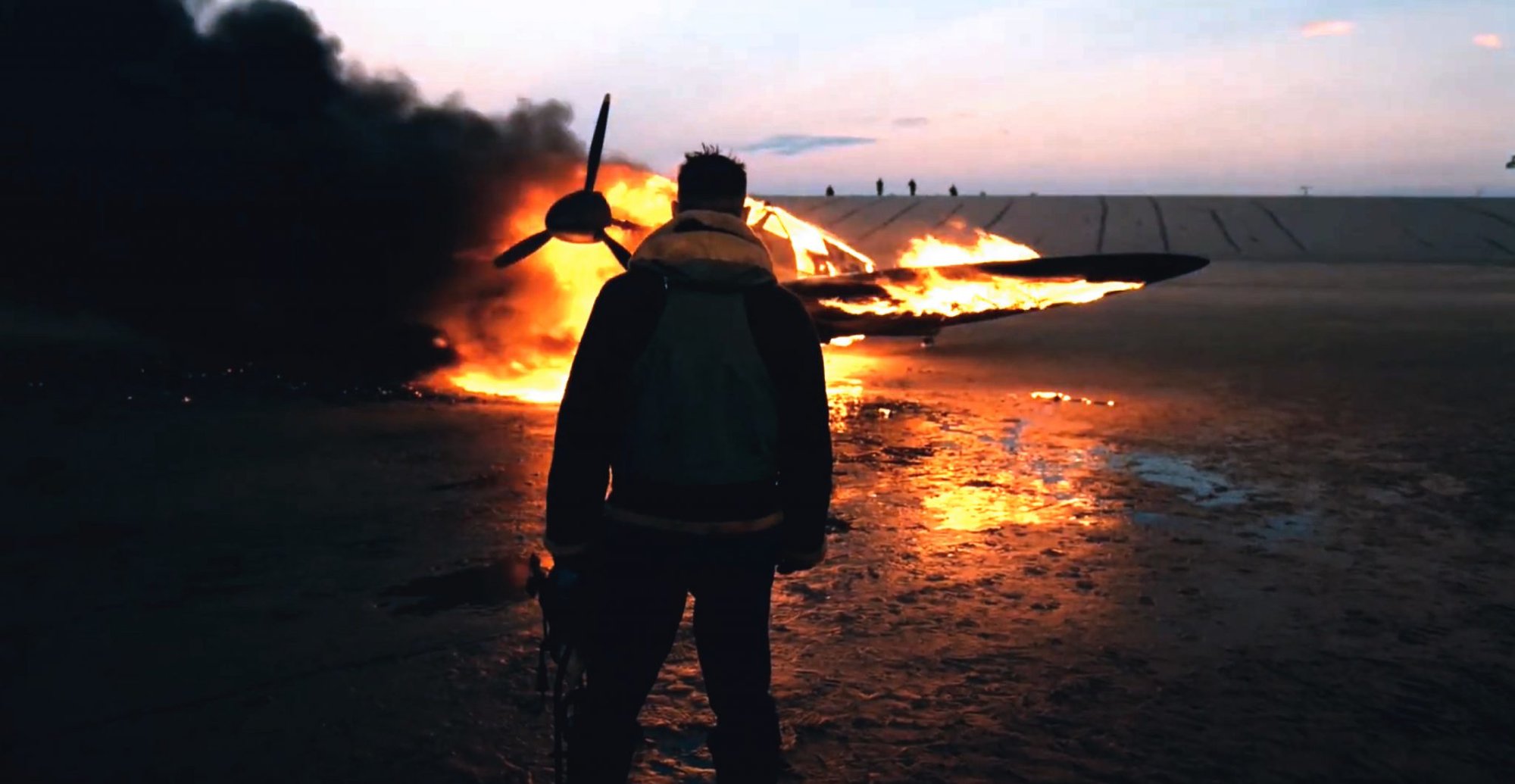Listen: Nolan’s ‘Dunkirk’ Is Full of Auditory Easter Eggs That Build Tension

Christopher Nolan placed more than 20 microphones on the airplanes used in ‘Dunkirk’ to capture the sounds of air combat. Edited screenshot of ‘Dunkirk,’ courtesy of Warner Bros Pictures.
Christopher Nolan’s Dunkirk opens with an uncomfortable lack of noise. Six soldiers meander on screen through an abandoned town, rummaging for food and water. There’s no dialogue, no music — just the eerily quiet sounds of paper rustling across cobblestone and water droplets leaking from a hose. Then, in a jump-scare more reminiscent of a horror movie than a period piece, the quiet world is shattered by deafening gunfire.
When Dunkirk hit theaters in the summer of 2017, it achieved immediate critical and commercial success. But despite beautiful cinematography shot with Imax cameras and an impressive cast, including Kenneth Branagh, Cillian Murphy, Mark Rylance, and Tom Hardy, not every moviegoer was pleased.
There were a number of complaints that the film was simply too loud. But the ear-splitting sounds were no accident: Nolan’s genius use of sound makes Dunkirk one of the most intense war movies of all time.

The film depicts the historic evacuation of more than 338,000 British and French troops from Dunkirk. Also known as Operation Dynamo, the evacuation saved England from annihilation and changed the course of world history. After the Nazis seized control of France in just six weeks, the remnants of the British Expeditionary Force retreated to the coast, where the troops were rescued in a miraculous feat that saved the Allied war effort.
Nolan’s telling of the inspiring true story is an anxiety-inducing tour de force. From the opening scene to the final credits, Dunkirk is crafted to feel like a drawn-out panic attack. Nolan accomplished the effect with a combination of crafty sound techniques — chiefly, an auditory illusion known as the Shepard Tone.
Simply put, the Shepard Tone uses multiple notes at varying octaves to create the illusion that sound is rising indefinitely. Sometimes called “the musical Barber’s pole,” the technique is used in Dunkirk to create a sense of tension and dread that coincides with the Germans’ advance and the impending doom of the British and French soldiers.
It’s the same technique Nolan used in The Dark Knight to make the Batpod sound like it’s always accelerating. But, while the effect is just sprinkled into the Batman trilogy, it dominates Dunkirk.
While the Shepard tone is present throughout the film, it’s not the only way Nolan uses sound to elevate Dunkirk. Known for favoring practical effects, Nolan opted to film the depictions of air combat using real Spitfires and Messerschmitts. To capture the feeling of being inside World War II fighter planes, Nolan placed 20 to 25 microphones inside each single-man airplane. This allowed Nolan to record each sound — the engine, the propeller, the wind screaming past the cockpit — individually and then mix them back together. The result is the auditory sensation of being inside the cramped planes as they duel over the English channel.
As if the Shepard Tone and the mixing of individual sounds weren’t enough to create an unforgettable film, Nolan added one last ingredient to his auditory cocktail: a ticking watch. He recorded the hands of his personal watch and gave the audio to the film’s composer, Hans Zimmer, to include throughout the score. The added ticks induce an almost subconscious feeling that time is running out for the film’s characters, so even though the enemy only appears during the film’s final scene (and even then just as silhouettes) its presence looms over the audience’s shoulder through the use of sound.

Dunkirk is always worth a rewatch (Quentin Tarantino watched it three times before ranking it in his top two movies of the decade), but the next time you watch it, use a pair of headphones and turn the volume up until it nearly hurts. Then you can experience the film the way it was intended to be experienced. And while you’ve got your headphones cranked to 11, keep a keen ear out for Michael Caine’s voice cameo (a nod to his role as a Spitfire pilot in The Battle of Britain). Dunkirk is Nolan at his best, but you’d be missing much of what makes the film great if you left the volume at a more comfortable level.
Read Next: The Glorious Glosters’ Indomitable Last Stand During the Battle of Imjin

Mac Caltrider is a senior staff writer for Coffee or Die Magazine. He served in the US Marine Corps and is a former police officer. Caltrider earned his bachelor’s degree in history and now reads anything he can get his hands on. He is also the creator of Pipes & Pages, a site intended to increase readership among enlisted troops. Caltrider spends most of his time reading, writing, and waging a one-man war against premature hair loss.
BRCC and Bad Moon Print Press team up for an exclusive, limited-edition T-shirt design!
BRCC partners with Team Room Design for an exclusive T-shirt release!
Thirty Seconds Out has partnered with BRCC for an exclusive shirt design invoking the God of Winter.
Lucas O'Hara of Grizzly Forge has teamed up with BRCC for a badass, exclusive Shirt Club T-shirt design featuring his most popular knife and tiomahawk.
Coffee or Die sits down with one of the graphic designers behind Black Rifle Coffee's signature look and vibe.
Biden will award the Medal of Honor to a Vietnam War Army helicopter pilot who risked his life to save a reconnaissance team from almost certain death.
Ever wonder how much Jack Mandaville would f*ck sh*t up if he went back in time? The American Revolution didn't even see him coming.
A nearly 200-year-old West Point time capsule that at first appeared to yield little more than dust contains hidden treasure, the US Military Academy said.












